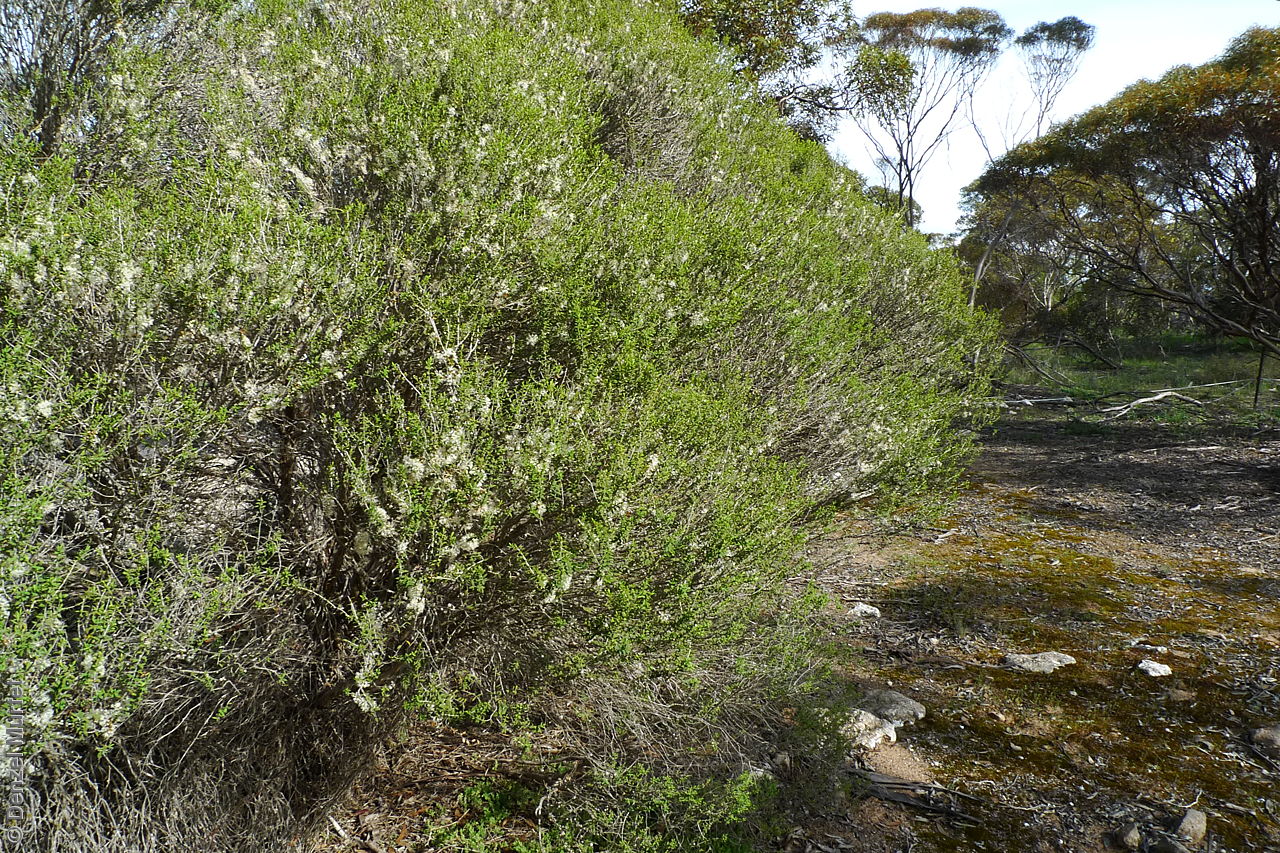
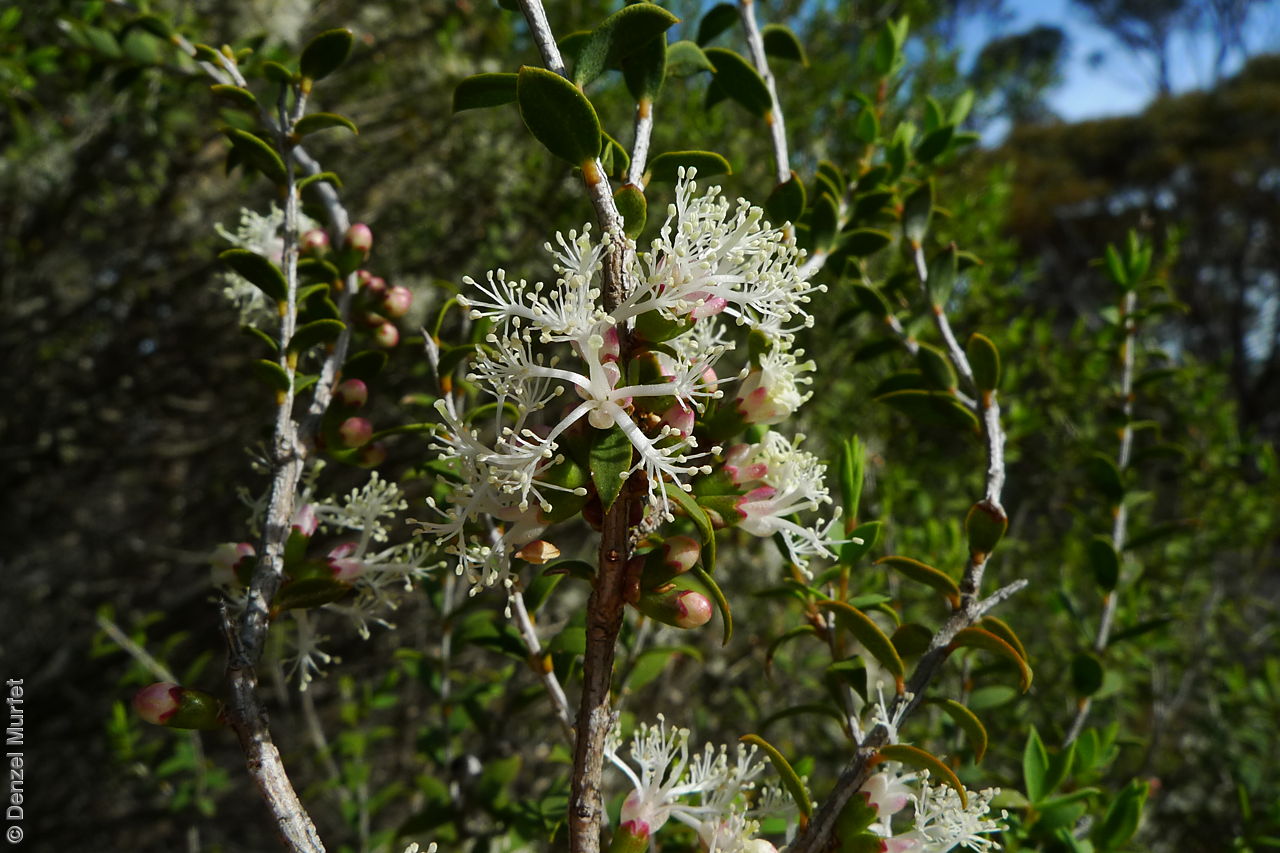
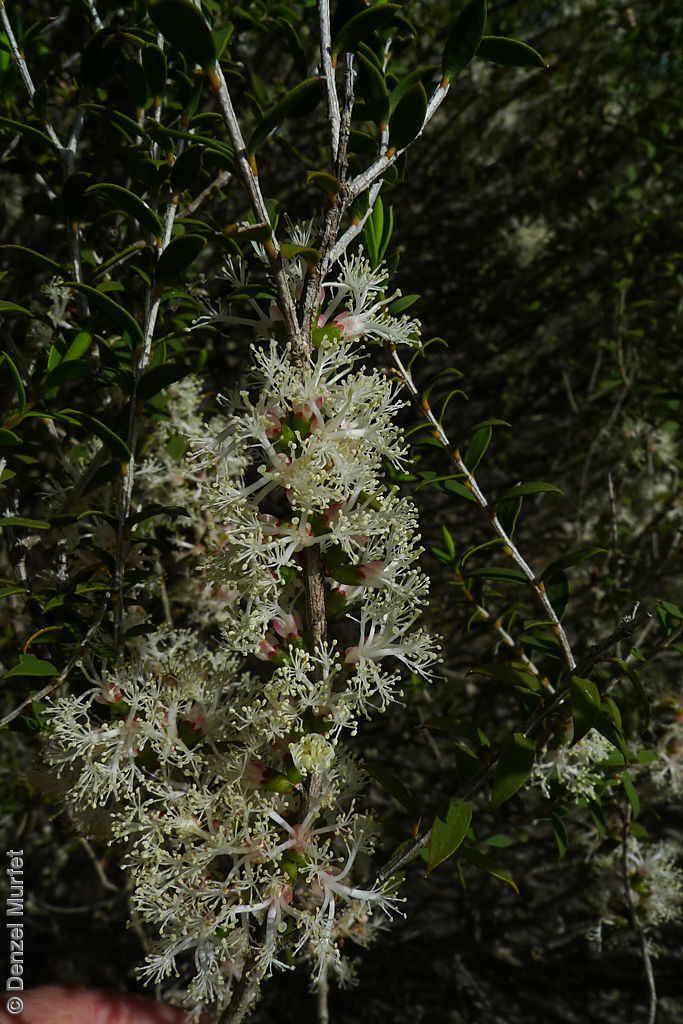
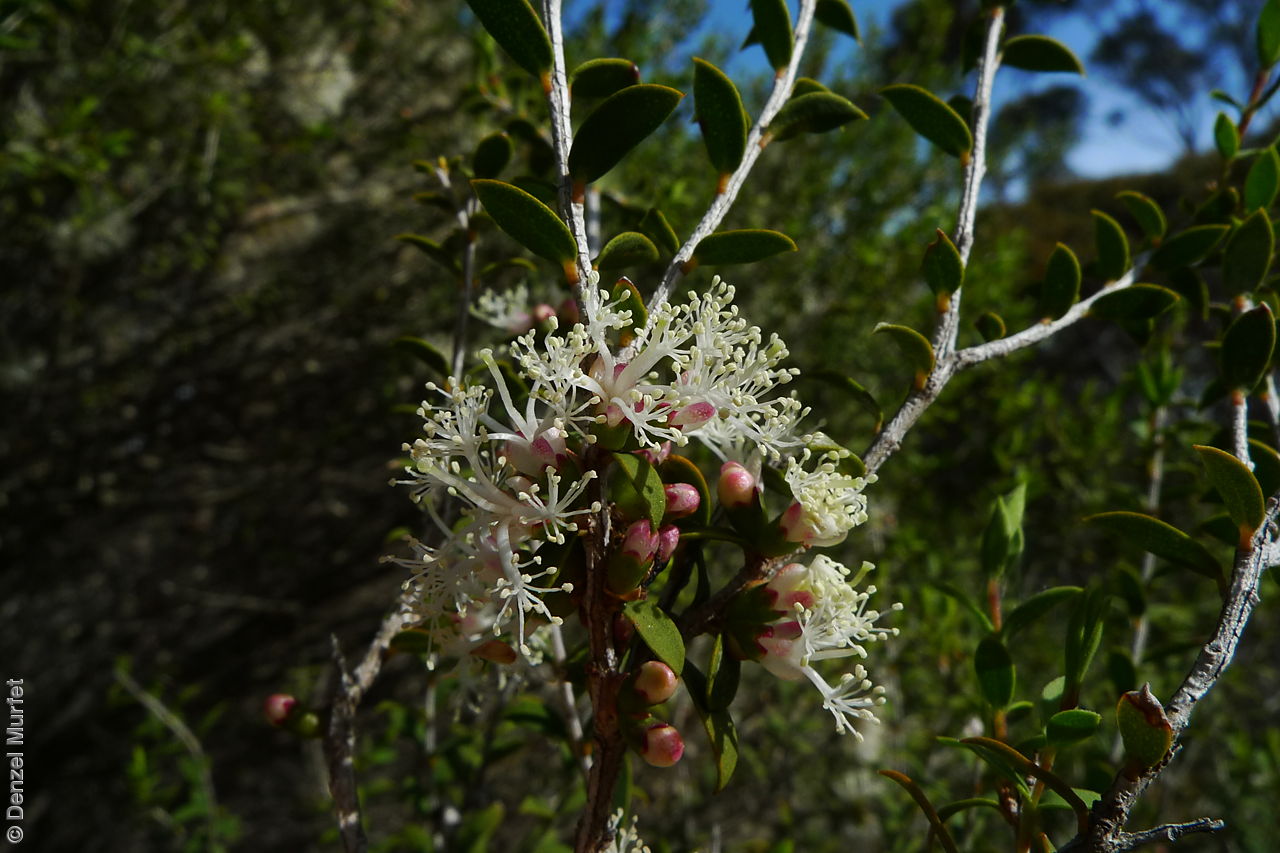
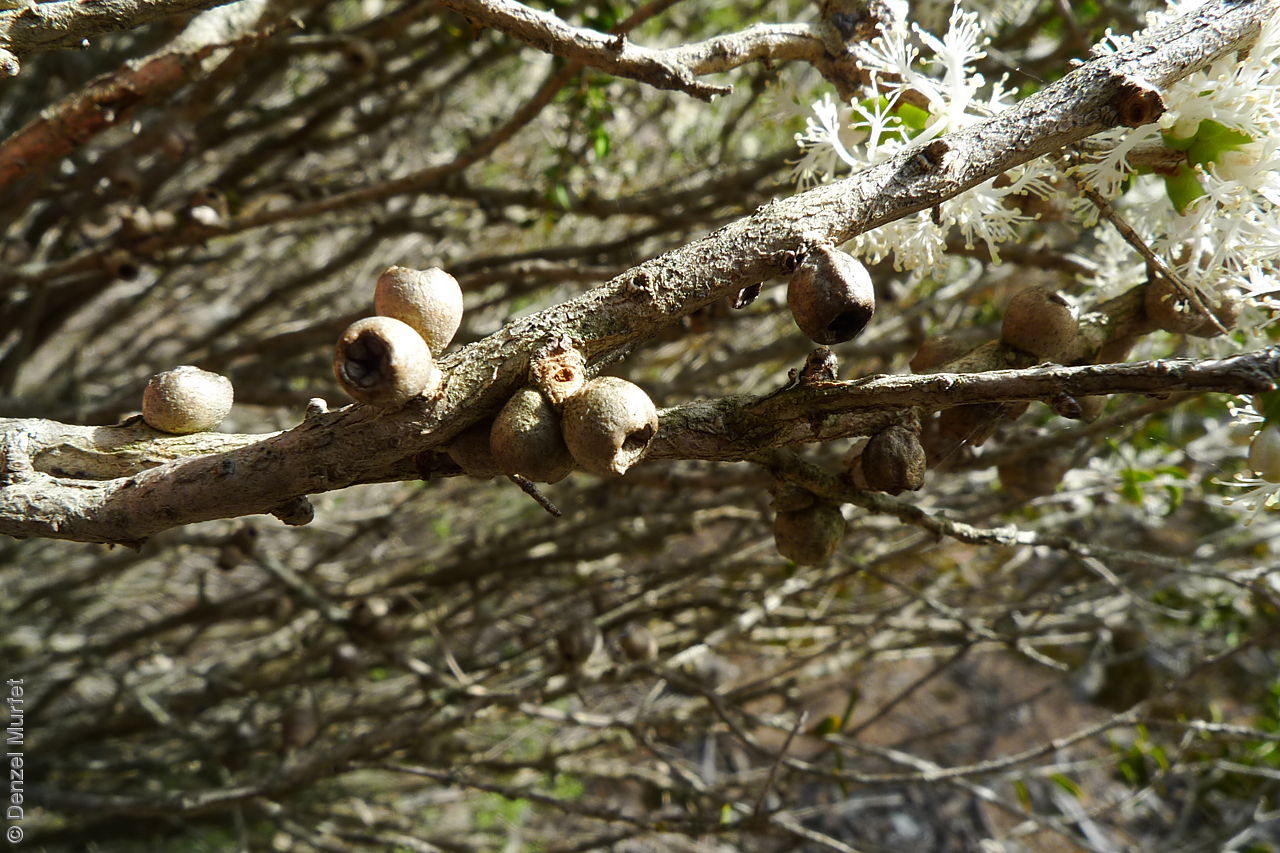
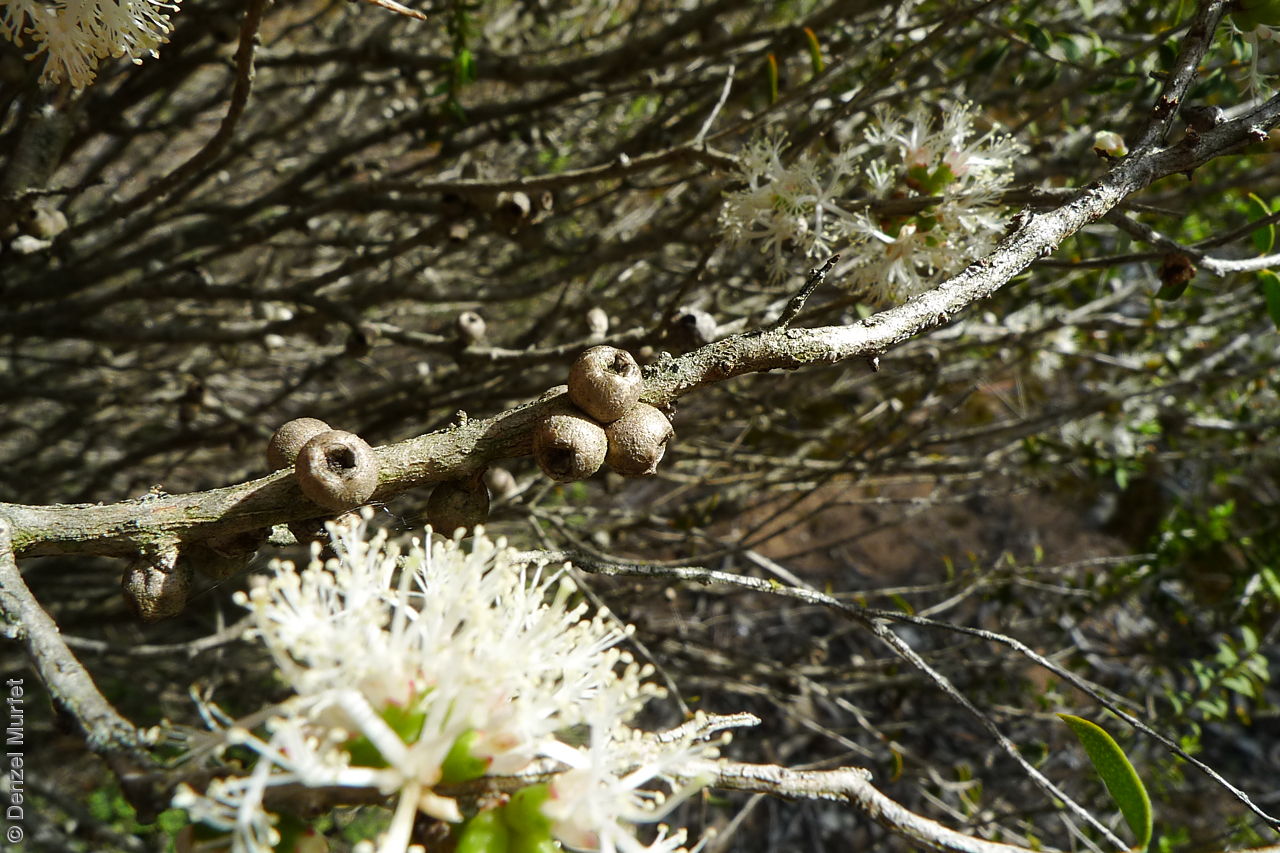
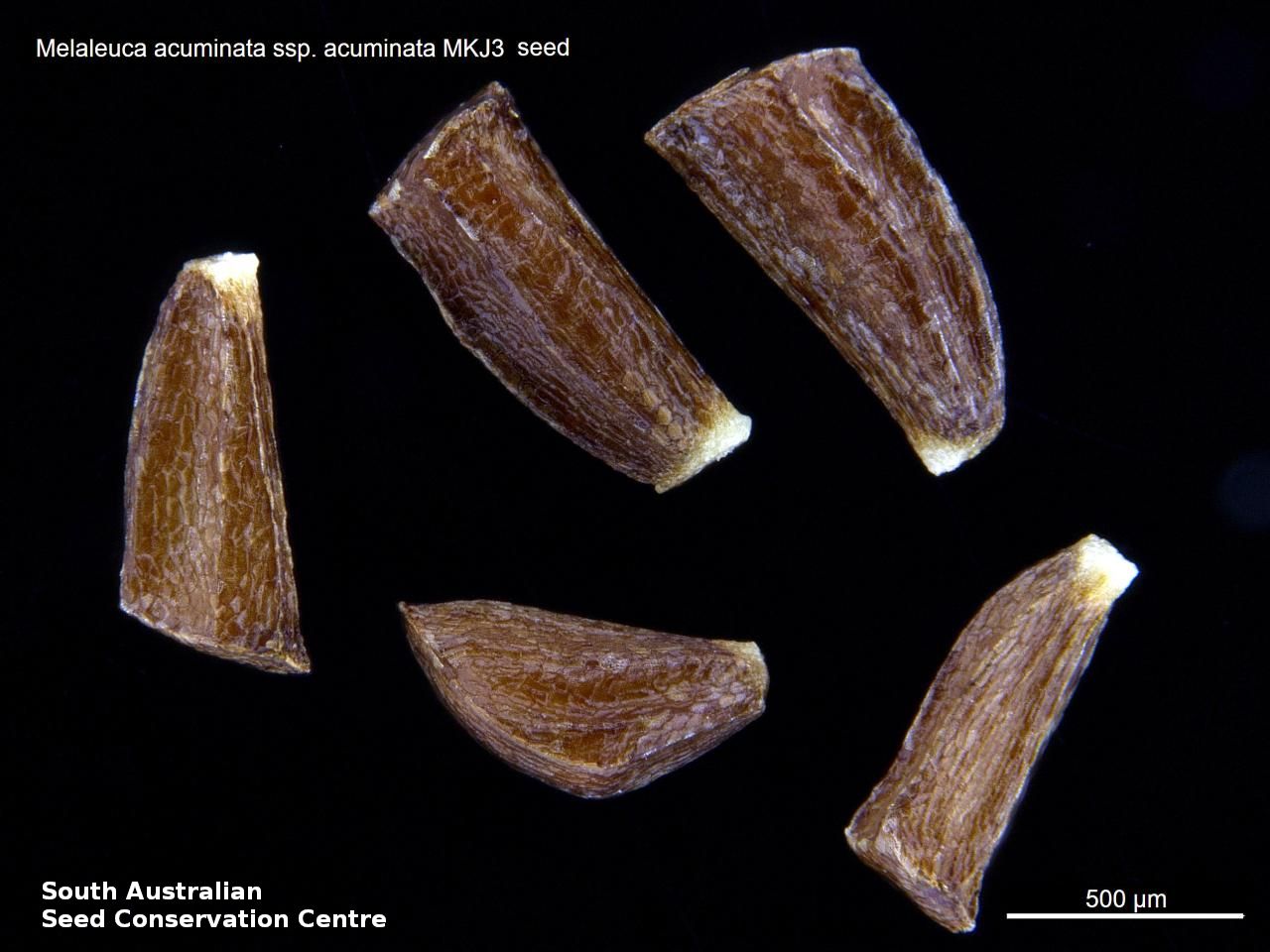

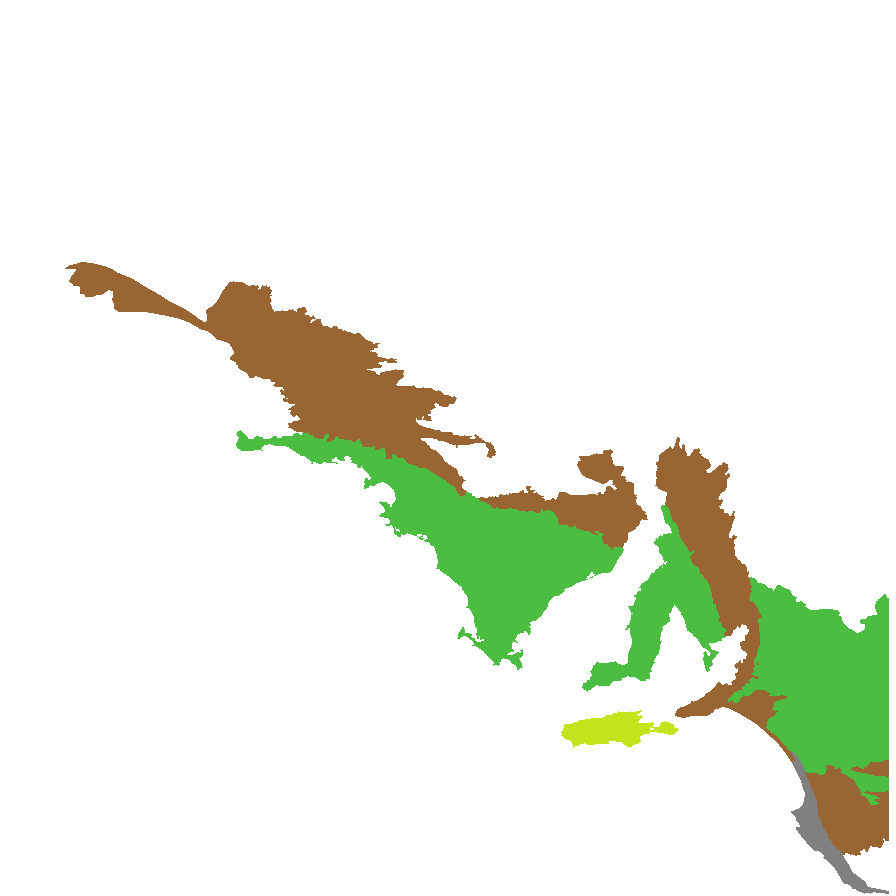
Botanical art
Prior names
Melaleuca acuminata
Common names
Creamy Honey-myrtle
Mallee Honey-myrtle
Etymology
Melaleuca, from the Greek 'melas' meaning black and 'leucon,' meaning white, alluding to the contrasting colours of the bark of the first species described, which is said to have had white branches against a black trunk. Acuminata, from Latin meaning tapering to a long point, referring to the leaves having an acute apex.
Distribution and status
Found in the southern part of South Australia growing in mallee woodland and heath on sand. Also found in Western Australia, New South Wales and Victoria. Native. Common in South Australia. Rare in New South Wales. Common in the other States.
Herbarium regions: Flinders Ranges, Eyre Peninsula, Northern Lofty, Murray, Yorke Peninsula, Southern Lofty, Kangaroo Island, South Eastern
AVH map: SA distribution map (external link)
Plant description
Shrub to 4 m high with rough and scaly bark. Leaves opposite, narrowly elliptic, to 10 mm long and 4 mm wide, apex acuminate, mucronate, glabrous. Inflorescence in lateral clusters of 3�6 white, or sometimes tinged with pink, flowers. Flowering in spring. Fruits are grey-brown, smooth, sub-globular woody capsule to 4 mm in diameter with valves to 2 mm wide; sepals persistent, in clusters on old wood Seeds are tiny brown rectangular or pyramid seed to 1 mm long and 0.5 mm wide. Seed embryo type is folded.
Seed collection and propagation
Collect seeds between January and December. Collect capsules that are large and hard, with closed valves. Place the capsules in a tray and leave to dry for at least two weeks or until all the valves are open. Then place all the capsules into a bucket with a lid if possible and shake hard to dislodge the seeds from the capsules. Use a sieve to separate the seeds from the capsules. The fine material will contain the seeds and other flowering material. It is very difficult to separate the seeds from this other material as the size, shape and weight are very similar. However the seeds will be a darker brown. Store the seeds with a desiccant such as dried silica beads or dry rice, in an air tight container in a cool and dry place. From one collection, the seed viability was average, at 75%. Seeds are non-dormant, viable seed should germinate readily.
| Location | No. of seeds (weight grams) | Number of plants | Date collected | Collection number Collection location | Date stored | % Viability | Storage temperature |
|---|---|---|---|---|---|---|---|
| BGA | 636,100 (14.75 g) | 10 | 25-Nov-2003 | MKJ3 Yorke Peninsula | 14-Aug-2006 | -18°C |
Number of plants: This is the number of plants from which the seeds were collected.
Collection location: The Herbarium of South Australia's region name.
% Viability: Percentage of filled healthy seeds determined by a cut test or x-ray.